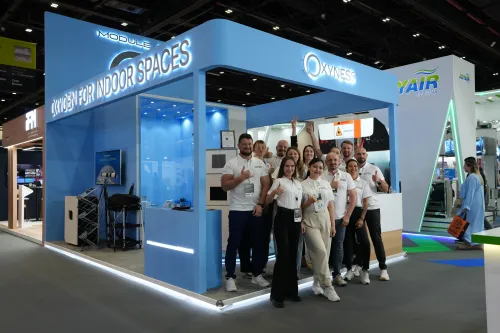How to improve concentration and memory while studying is a question that touches millions of students worldwide. The human brain is not designed for endless focus, but it can be trained and supported through the right strategies. Studying requires long-term memory retention, short-term attention, and an ability to filter distractions. Many learners search for how to improve your concentration because they feel overwhelmed by digital interruptions, fatigue, and a lack of mental clarity. Research demonstrates that combining structured learning techniques with optimized indoor environments leads to improved concentration and stronger academic outcomes.
When we consider how to improve concentration at work, the problem shifts to a corporate setting. Professionals today face constant emails, messages, and task-switching that fracture their focus. The demand for productivity pushes employees to multitask, yet studies confirm that multitasking reduces efficiency by up to 40%. Organizations that invest in wellness programs, air purification systems, and mindful scheduling report measurable increases in focus. Oxygen levels in offices are often overlooked, yet oxygen enrichment is a critical factor in sustaining cognitive function. People who investigate how to improve focus and concentration at work discover that environmental quality and structured time management are as important as motivation.
Another frequent challenge is how to improve concentration when reading. Reading comprehension requires calm, sustained attention, but many readers find themselves re-reading pages without absorbing information. To address this, experts recommend creating reading rituals: designated quiet spaces, short breaks, and annotation practices. Active reading transforms passive absorption into engagement, resulting in stronger memory. Improved indoor air quality also plays a role, since the brain relies on oxygen for processing complex texts. A balanced environment with purified, oxygen enriched air ensures that reading remains a productive and enjoyable task.
The phrase improve concentration covers a broad range of practices. Cognitive scientists emphasize the role of sleep, exercise, and hydration in maintaining mental stamina. Sleep consolidates memories, exercise boosts blood circulation, and hydration prevents fatigue. Nutrition provides fuel for the brain, with omega-3 fatty acids, antioxidants, and vitamins supporting synaptic function. Yet, while many people attempt mental training or nutritional supplements, they overlook the importance of air quality. Oxygen deficiency indoors can undermine every other effort. That is why modern wellness approaches combine air purification technologies with oxygenation to deliver truly improved concentration.
For students, how to improve concentration and memory while studying involves specific techniques. Spaced repetition strengthens long-term memory, while active recall ensures better retrieval. The Pomodoro method, which alternates 25 minutes of study with 5 minutes of rest, prevents burnout. Removing distractions, such as silencing notifications and organizing digital tools, also helps. But these practices are maximized when the study environment supports brain function. Clean air, stable oxygen levels, and proper lighting create the foundation for high performance. Without oxygen balance, study sessions become less effective, no matter how much effort is applied.
For professionals, how to improve concentration at work connects directly to organizational design. Workplaces that promote “deep work” culture — uninterrupted blocks of time for critical tasks — report higher innovation and productivity. Improved air systems in offices are shown to reduce sick leave and cognitive fatigue. People searching for how to improve focus and concentration discover that strategies like time-blocking, setting clear priorities, and controlling office noise are highly effective. Managers who invest in wellness technology not only improve employee health but also gain measurable economic returns through productivity.
How to improve concentration when reading links strongly to cognitive psychology. Reading efficiency increases when texts are segmented, when notes are taken actively, and when readers engage in self-testing. Improved concentration during reading also requires managing internal distractions, such as wandering thoughts. Techniques like mindfulness and breathing exercises stabilize attention. The external environment remains equally critical: comfortable seating, natural lighting, and oxygen-enriched air enhance the brain’s processing ability. When these conditions are met, reading becomes immersive and knowledge retention improves dramatically.
How to improve focus and concentration often overlaps with questions about memory. Focus directs attention, while memory encodes and retrieves information. Both are dependent on oxygenation and stress regulation. High cortisol levels from stress impair the hippocampus, the brain’s memory center. Practices like meditation, yoga, and controlled breathing reduce stress hormones, while purified air supports neurological function. Individuals exploring how to improve your concentration often find that lifestyle changes combined with optimized environments deliver long-term results.
The general goal to improve concentration is not limited to academic or professional tasks. Emotional stability, creativity, and decision-making all depend on focused attention. Families that integrate wellness solutions into their homes notice calmer children and better academic performance. Adults experience sharper thinking and better sleep. Elderly individuals benefit from oxygen-rich air, which supports both memory and emotional well-being. Thus, improved concentration is not simply about tasks — it is about overall life quality.
Practical Steps Across Contexts
For Students
Use active recall and spaced repetition to strengthen memory.
Apply the Pomodoro method for sustained study.
Ensure the study space has purified, oxygen-enriched air for brain stamina.
For Professionals
Use time-blocking to manage complex projects.
Reduce multitasking and digital interruptions.
Support focus with wellness technologies and enriched indoor air.
For Readers
Read in quiet, dedicated spaces with balanced lighting.
Practice annotation, summarization, and reflective pauses.
Improve concentration through mindfulness and proper breathing.
These practices show that whether the challenge is how to improve concentration and memory while studying, how to improve concentration at work, or how to improve concentration when reading, the underlying principles remain the same: support the mind through structure, lifestyle, and environment.
Environmental Factors
Indoor environments are often overlooked, but air composition is as crucial as nutrition. Traditional air purifiers remove dust and allergens but do not enrich oxygen. The brain, consuming 20% of the body’s oxygen, struggles without balance. Oxygen enriched environments support synaptic plasticity, the ability of neurons to form and strengthen connections. This enhances both focus and memory. Therefore, people seeking improved concentration should consider not just mental strategies but also environmental technologies that improve indoor air.
Extended Applications
Educational institutions investing in better air quality and structured learning techniques report higher test scores. Corporate offices with wellness programs that combine mindfulness, air purification, and structured work schedules achieve higher productivity. Homes with oxygen enriched air systems support children’s learning and adults’ emotional well-being. Each case confirms that to improve concentration, individuals must look beyond personal habits and include their surroundings.
How to improve your concentration is not a single answer but a comprehensive lifestyle. Balanced sleep, regular exercise, proper hydration, structured focus methods, and enriched air quality all come together. Individuals who practice these steps consistently achieve improved concentration across study, work, and leisure activities.

Module21 for Your Business

Module21 for Your home






